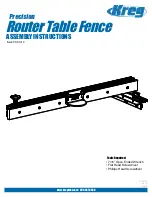
80
•
Annex Mode:
This device supports different DSL Variant
(Annex) – Annex A, Annex I, Annex A/L, Annex M, A/J/J/L/M
(multiple-mode), Annex B, Annex B/J (multiple-mode).
Contact your ISP to find out the DSL variant (annex) that is
used on your DSL line.
•
Dynamic Line Adjustment (ADSL):
This function allows
the system to monitor and maintain the stability of the
ADSL line. This function is enabled by default, and the
system adopts corresponding changes based on the
current ADSL line condition.
•
Stability Adjustement (ADSL):
It allows you to configure
the Signal-to-Noise Ratio Offset. Set the value for this item
based on the following conditions:
•
Normal DSL connection:
Set the value from 1 dB ~ 10dB for
maximum performance.
•
Unstable or no ADSL connection:
Set the value to a
negative dB such as -1 dB.
•
Persistent issue with unstable or no ADSL connection:
Set
the value from -2dB ~ -10 dB for maximum stability.
•
Rx AGC GAIN Adjustment (ADSL):
Allows you to configure
Rx AGC GAIN (Auto Gain Control) for your ADSL line. You
can set this item to any of these modes:
•
Stable:
Select this mode to get a stable ADSL connection.
•
High Performance:
Select this mode to improve the current
downstream speed.
•
Default:
Select this mode for your xDSL modem router to
automatically assign the suitable mode for your ADSL line.
•
Stability Adjustment (VDSL):
It allows you to configure
the target SNRM (Signal-to-Noise Ratio Margin) for your
VDSL connection. When configuring this item, you may
consider the following scenarios:
• For maximum downstream performance, set this item to a
value lower than the original (such as from 8dB to 7dB or
lower).
IMPORTANT!
Setting a low value may weaken your xDSL modem router
defense against line noise, and may result to VDSL sync loss or failure.
• For a more stable VDSL connection, set this item to a higher
value such as 9dB ~ 30dB.
















































